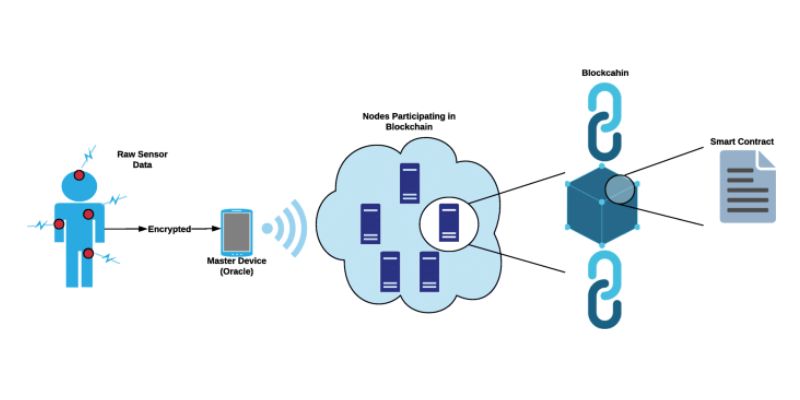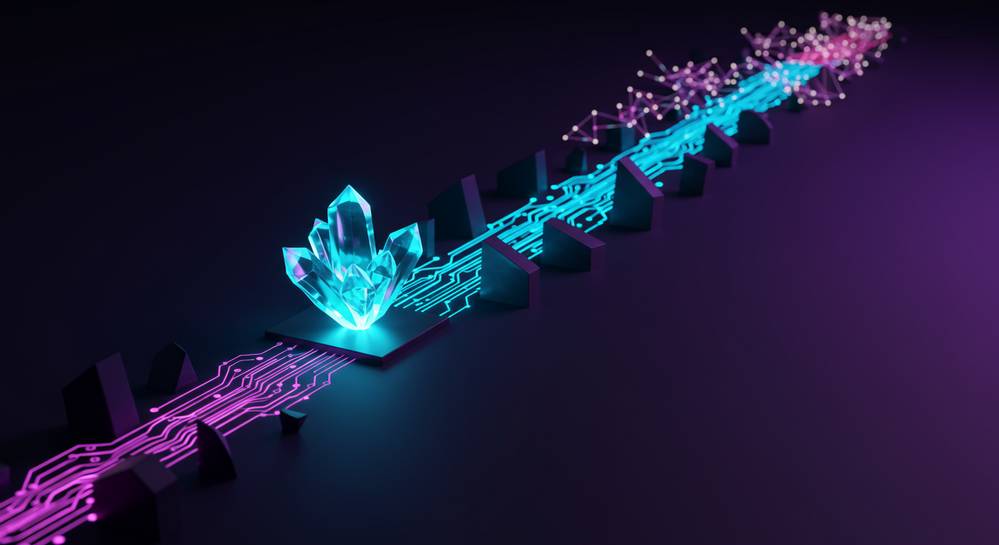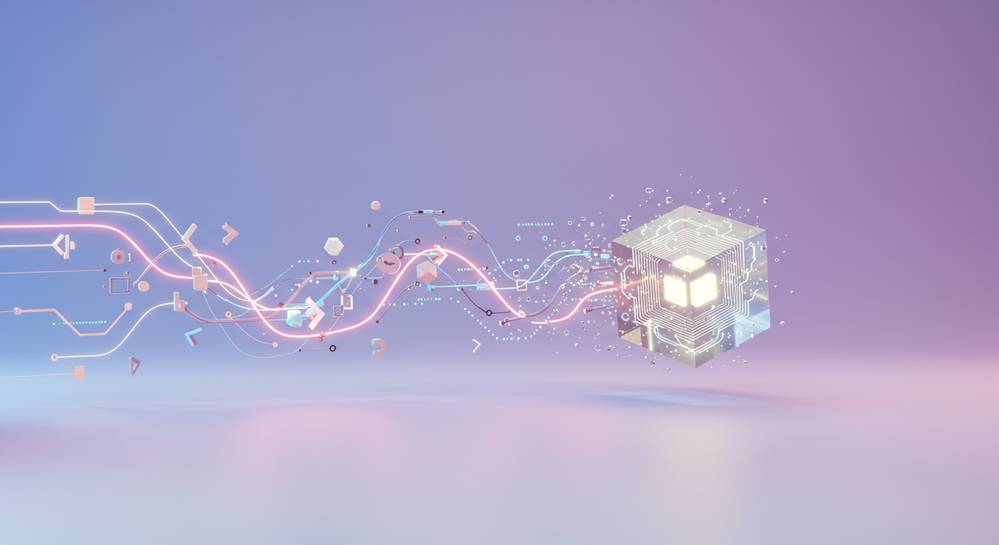Blockchain Explained: Unraveling the Cryptic Technology’s Workings
Ever wondered, What is blockchain and how does it work? Let’s dive in. Imagine a system where you can share info without fear. That’s what blockchain does. It’s like a digital ledger that everyone can check, but no single person owns. This tech powers not only Bitcoin but also a world of other cool stuff. We’ll explore how it’s built, why it’s safe, and what makes it tick. Hang tight as we break down this tech into easy bits you’ll get in no time!
The Foundation of Blockchain Technology
Understanding Distributed Ledger Technology
Imagine a book where you write down everything you spend. Now picture everyone has a copy of this book. And every time someone makes a note, it shows up in all the books at once. This is how blockchain works, but instead of a book, it’s a digital record.
Every time someone buys or sells something using blockchain, that action gets a special code. This code gets added to everyone’s record. So, it becomes very hard to cheat or change what was written. You can trust what you see without needing one person or place to check everything.
Blockchain is not kept in one spot but copies are stored across many computers. This helps to protect it and keeps everyone honest.
Exploring the Core Principles of Blockchain
Now let’s talk about what keeps blockchain safe and working well. We use a special puzzle called a “proof of work” that helps to secure the network. Solving this puzzle is how new records are made and added.
There is also a newer method called “proof of stake”. Here, people lock in some of their digital money as a pledge to play by the rules. Doing this helps to keep things running honestly too.
In both ways, all the transactions are kept in blocks. Each block has a unique code created by a “hash function”. This code is like a seal that locks the block tight. So once a block is added to the blockchain, no one can mess with it.
You’ll hear about stuff like “smart contracts”, which are like deals that run by themselves when certain things happen. And you might have heard about Bitcoin, which was the first type of digital money using blockchain.
Blockchain is not just for money stuff though. People use it for many things like keeping supply chains clear so you know where your stuff comes from. It can also help us manage who we are online with blockchain identity management.
Blocks on the blockchain are made by people and machines that process and confirm new transactions. This is called mining and helps to keep the ledger updated and secure.
That’s blockchain in a nutshell – a smart, trustworthy way to keep a joint record of what’s going on. It’s a powerful tool that’s changing how we do things in business and beyond.

The Mechanics of Trust in Decentralized Networks
Consensus Mechanisms: Proof of Work vs. Proof of Stake
Let’s dive into how blockchain makes trust happen without anyone in charge. In a blockchain, trust comes from consensus mechanisms. These are rules to make sure all the parts agree on the data’s truth. Think of it like a game where players follow rules to agree on a score.
Proof of Work (PoW) is our first player. It’s a way to agree on new info added to the blockchain. To add info, like a money move, computers solve complex puzzles. The first to solve it gets to add the info and earns a prize, like Bitcoin. It’s hard work, hence the name.
Next up, Proof of Stake (PoS). This player works differently. Instead of puzzle-solving, users lock in some of their digital coins. Think of it as a security deposit. If they try to add misleading info, they lose their deposit. It’s like being a trusted club member.
So, which is better? PoW uses a lot of computer power and is slow. PoS is lighter on resources and faster. Both got their strong points, and which one’s used depends on the blockchain.
Security Features of Blockchain: Cryptography and Immutability
Now, let’s peek at how blockchain keeps your info safe and permanent. Cryptography is the hero here. It scrambles data into a secret code that’s tough to crack. Only those who should see your info can.
Every piece of info or ‘block’ has a unique code, called a hash. Once a block joins the blockchain, changing its data is super hard. If anyone tries, the hash will change, like a broken seal on a jar. This warns everyone something’s wrong.
These codes also link the blocks together, like links in a chain. If one block’s code is changed, it messes up the rest. This linking makes the blockchain “immutable.” Once info is written, it stays put, safe from tampering.
Blockchain’s strength comes from this teamwork of security features. They turn the blockchain into a reliable keeper of our digital deeds. It protects our transactions, who we are, and our stuff in the online world.
Whether you’re sending money or trading digital cards, blockchain’s mechanics ensure everything’s on the up and up. It’s like having an invisible, super-secure, always awake watchdog for your data.
So there we have it, folks. By now, you get the importance of consensus mechanisms and the iron-clad security that keeps our blockchain ticking. It’s these clever game rules and crypto shields that let us trust in this tech marvel.

Engaging with Blockchain: Transactions, Contracts, and Tokens
From Transaction Blocks to Smart Contracts
Picture a block as a box of info. Each block holds a bunch of transactions. Like sending money online. But super secure. ‘Cause once a block fills up, it gets locked down by a complex math problem. That’s where miners come in. They solve the math and seal the block. This gives them a reward – some digital money.
Now, imagine all these blocks linked up in a chain. That’s blockchain. It’s public for everyone to see. Yet, it’s super tough to change, offering trust in the system. Each block has a unique code called a hash. This keeps the blocks safe from tampering. If one block’s code changes, it stands out like a sore thumb.
Smart contracts follow the same trail. They’re like regular deals, but digital and automatic. Say, you rent an online bike. The smart contract kicks in, takes your payment, and unlocks the bike. No middleman. It keeps things smooth and lets transactions happen quick.
Cryptocurrency Basics: Bitcoin, Ethereum, and Beyond
Now, onto cryptocurrencies. Bitcoin kicked it all off – no banks, no physical money, all digital. It works on blockchain. Sends and stores money safely on a huge, open network. Ethereum came next. It took what Bitcoin did and went bigger. It’s not just about money. It lets developers build complex programs, those smart contracts we talked about.
Behind them both is a wild tech called cryptography. Think secret codes protecting your info. This ensures that the money you send or receive is yours alone. Now, many new coins exist, all with different extras. Some are for privacy. Some help artists sell digital art as NFTs (non-fungible tokens).
As we dive deeper into this world, it can get overwhelming. But hang tight, ’cause it’s shaping our future. From buying coffee with Bitcoin to signing a home lease with a smart contract. It’s a new frontier, reshaping how we do everyday stuff. And as we march on, remember, with blockchain, our transactions, deals, and digital treasures are in a vault seen by everyone but cracked by none.

The Future of Blockchain: Applications and Challenges
Extending Blockchain Beyond Finance: Identity and Supply Chains
Blockchain isn’t just for buying and selling digital coins. It digs into areas like who you are and what you buy. Think about all the times you need to prove who you are. Online, it’s a lot. Now, imagine if those pesky login details were safe on a blockchain. No one but you could say, “Hey, that’s me!” This is called blockchain identity management. It’s a plan to stop identity theft.
Businesses get a win from blockchain too. When making stuff, lots of parts come from different places. This often causes mix-ups. With blockchain, everyone involved can track these parts. It’s like having a map showing where everything is now and where it was before. This is supply chain transparency. It means businesses can show they’re clean. They can prove they don’t use child labor or harm forests.
Tackling Scalability and Interoperability in Blockchain Systems
Scalability is tech-speak for getting bigger without hiccups. Interoperability means different blockchains talk to each other. Right now, blockchains have a tough time handling loads of transactions quickly. It’s like a two-lane road when we need a freeway. Tech folks are working hard on solutions so that blockchain can handle more at once.
Blockchains need to chat with each other to spread their benefits. If blockchains were kids, we’d want them to get along, share their toys. That’s interoperability. We seek a way for, say, a Bitcoin user to easily work with someone on Ethereum. These two big names in blockchain need to understand each other. It’s important to get this right so blockchains can grow.
In the big picture, blockchains stand for trust and teamwork over borders. They can help keep things open and truthful. This is great for us all. As for the hurdles, like a maze, we just need to find our way through. The prize could be a world where data, like promises, stay intact. With smart folks solving these puzzles, the road ahead looks bright.
I’ve guided you through the nuts and bolts of blockchain, from its foundation to its future. We kicked off by discussing the shared ledger that’s key to blockchain. I also broke down its main rules. Trust is next. We dove into how blockchain decides who’s playing fair—either by mining or owning more coins. Plus, we covered how it keeps data safe and unchanged.
Then, we looked at how blocks hold deals and contracts, not to forget the coins like Bitcoin. Finally, we eyed the road ahead for blockchain. I showed you it’s not just for money matters—it could change how we share who we are and track items we buy. Yet, it’s not all smooth sailing. We must make blockchain play well with others and handle more action.
So, there you have it. Blockchain isn’t just tech talk; it’s a real game-changer with loads to offer. Sure, it’s not perfect yet, but its promise is too big to ignore. Keep an eye on it—it’s set to rock our world.
Q&A :
What is Blockchain Technology?
Blockchain is a system of recording information in a way that makes it difficult or impossible to change, hack, or cheat the system. It is a digital ledger of transactions that is duplicated and distributed across the entire network of computer systems on the blockchain. Each block in the chain contains a number of transactions, and every time a new transaction occurs on the blockchain, a record of that transaction is added to every participant’s ledger.
How Does Blockchain Function?
Blockchain functions by creating a record, called a block, which is then linked securely to the previous block in the chain, thus making a chain of blocks or “blockchain.” Each block contains a cryptographic hash of the previous block, a timestamp, and transaction data, creating an immutable and chronological ledger. The decentralized nature of blockchain technology means that it is vetted by a peer-to-peer network, commonly referred to as miners in a public blockchain, who validate and record transactions, ensuring security and trust without a central authority.
What Are the Key Features of Blockchain?
The key features of blockchain include decentralization, transparency, immutability, and security. Decentralization removes the control that a single entity has over the system. Transparency gives every participant in the network the ability to view the entire history of the ledger. Immutability ensures that once a transaction has been recorded in the blockchain, it cannot be altered. Security is achieved through cryptographic hash functions and consensus algorithms which protect against fraud and hacking.
What Types of Transactions Can Blockchain Record?
Blockchain can record any type of transaction that involves value, such as money, goods, property, or data. It’s used for a variety of applications, from financial transactions with cryptocurrencies like Bitcoin to tracking the movement of goods through a supply chain, securing digital identities, and even recording votes in elections.
Why is Blockchain Considered More Secure Than Traditional Record-Keeping Systems?
Blockchain is considered more secure than traditional record-keeping systems due to its distributed nature, cryptographic hashing, and the consensus mechanism for validation of transactions. Rather than being stored in a single location, copies of the blockchain are held on multiple computers, greatly reducing the risk of unauthorized access and tampering. Each block is also mathematically linked to the previous one, making it virtually impossible to alter past transactions without detection. The need for majority agreement among network participants to validate transactions further helps to prevent fraud.



